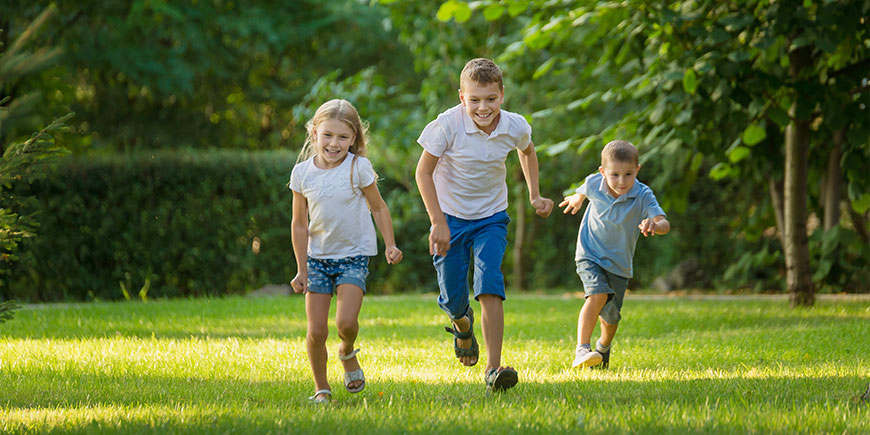The study, published in JAMA, highlights the importance of early life exposure to green spaces for bone health.
Green and Bone: Study published in JAMA highlights how targeted interventions early in life could reduce the risk of fractures and/or osteoporosis later in life.
Green and bones: is there a link?
Is early-life exposure to residential surrounding green space associated with childhood bone health?
Based on this key question, Belgian researchers structured a cohort study (ENVIRONAGE – Environmental Influence on Ageing in Early Life) involving 327 mother-child pairs from Flanders and Belgium.
Participants recruited at birth were followed for 4-6 years between 1 October 2014 and 31 July 2021. Subsequent data analysis was performed between January and February 2022.
Introduction
Bone mass accrual is influenced by environmental and lifestyle factors. It is a key determinant of bone strength throughout life.
Peak bone mass is reached in early adulthood and depends on the accumulation of bone mass during growth and skeletal development. Sub-optimal accumulation in early life is therefore crucial for the onset of osteoporosis in adulthood and for the loss of bone mass with age.
Targeted interventions at the early stages of life might decrease fracture and/or osteoporosis risk later in life.
In addition to the influence of genetic factors, physiological factors, lifestyle (e.g. diet and physical activity) and environmental factors in early life may also play an important role in bone mass growth.
Literature studies
Several studies have reported the benefits of exposure to green spaces in early childhood on children’s neurocognitive and socio-behavioural development, as well as mental and emotional well-being. In addition, increased exposure to green spaces during childhood is associated with lower body mass index, lower risk of overweight and obesity, lower blood pressure and increased physical activity.
Despite growing evidence of health benefits, there are few studies on the association between exposure to green space and bone mineral density. One large population-based epidemiological study reported that living in a greener area was associated with increased bone strength in adults, suggesting that residential exposure to green space may have a beneficial effect on bone health. However, another longitudinal study of older people found no protective effect on bone health.
The aim of the study was to investigate whether early-life exposure to residential surrounding green space is associated with changes in bone mineral density in young children living in an affluent society.
Bone mineral density assessment
Bone mineral density is commonly used as a proxy measure of overall bone strength. Considering the young age of the participants and in the context of large-scale research studies, researchers used quantitative ultrasonography, a radiation-free technique, to assess bone mineral density, which has been shown to correlate well with dual-energy X-ray absorptiometry measurements.
At the follow-up visit, bone mineral density was assessed in the children’s forearms using a densitometer, combined with specific software capable of interpreting the data. This quantitative ultrasonography method uses axial transmission technology based on the measurement of the speed of ultrasonic waves propagating along the bone. The average axial transmission speed of sound was obtained in metres per second after 3 consistent measurement cycles at the distal third of the radius while the child was seated with the left elbow lying on the table and the thumb facing up.
Green exposure and bone health
Residential green space was estimated as high green (height of vegetation >3 m), low green (height of vegetation ≤3 m) and total green (sum of high and low) within several radii (100-3000 m) around the households’ residence.
Early-life exposure to residential green space was associated with increased childhood bone health..
Statistical analysis
Analyses were conducted between January and February 2022. Simple and multiple linear regression models were used to examine the association between children’s bone mass and determinants of bone mineral density. In addition, multiple linear regression analyses were performed to examine the association between exposure to residential green spaces within different radii and children’s bone mineral density.
All models used were adjusted for relevant covariates and potential confounders, i.e. the child’s sex, age, weight, height, ethnicity, maternal education level, but also daily screen time, vitamin supplementation, daily dairy consumption, season and average annual income in the neighbourhood.
Results
From the data analyses, exposure to total residential green space was positively associated with bone mineral density for all radii (100-3000 m) considered around households’ homes.
In particular, the strongest association was observed for green space within 500 m, indicating that an increase in total green space (21.2 per cent) and high green space (19.9 per cent) was associated with an increase in bone mineral density of 27.38 m/s and 25.30 m/s respectively.
In addition, an increase in total (25.2%) and high (23.2%) green space within 1,000 m was associated with a 67% and 61% increase in the odds of having a bone density below the 10th percentile, respectively.
In this birth cohort study of 327 children aged 4-6 years, participants exposed to more green space within 300-3000 m of their home had significantly higher bone mineral density. In addition, more green space within 1,000 m was significantly associated with a lower likelihood of having low bone density.
Clinical significance
This prospective birth cohort study provides evidence about the importance of the surrounding residential green space from birth until age 4 to 6 years on bone health.
Furthermore, there is an urgent need to raise political awareness of the importance of preserving and expanding green spaces to maximise bone mineral density in children. Moreover, this study highlights the urgent need to raise awareness among policy makers on the importance of conserving and expanding residential green spaces to maximize bone mineral density during crucial periods of growth and development. The promotion of such preventive strategies might decrease fracture and/or osteoporosis risk later in life, resulting in financial, physical, and psychological benefits for the individual and the community.


